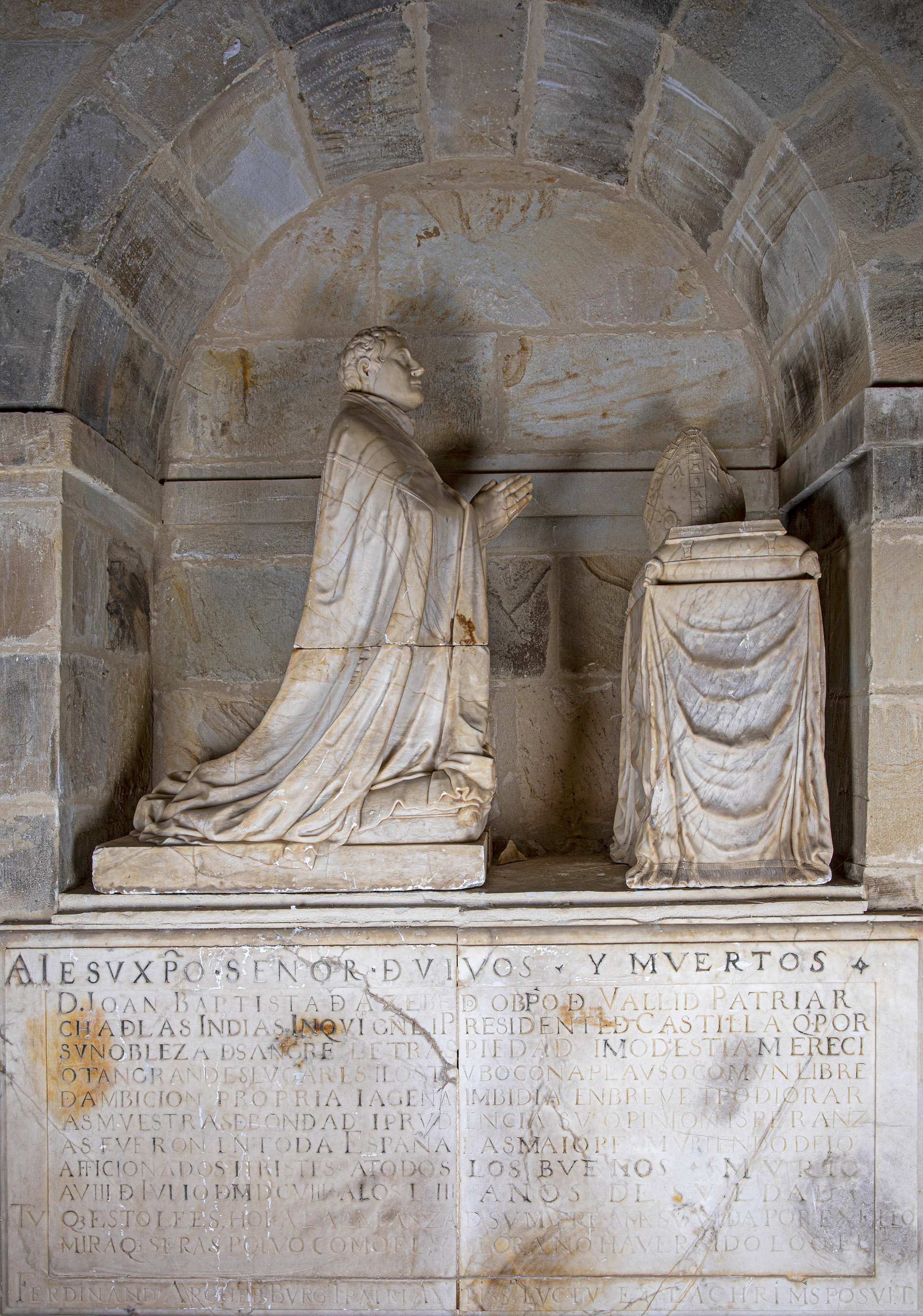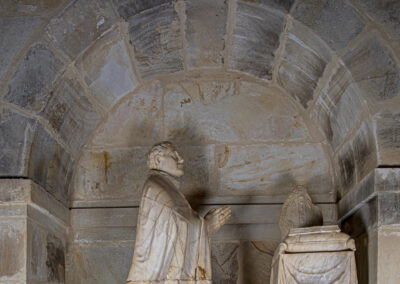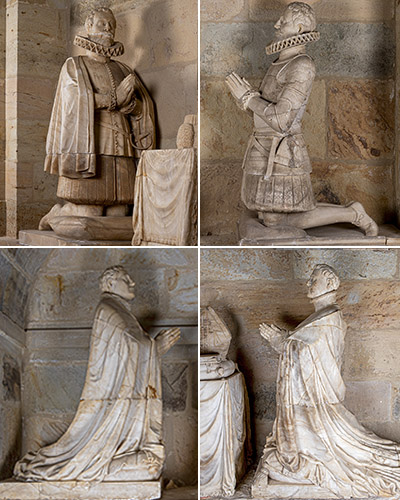This sculpture of a praying man depicts Juan Bautista de Acebedo, an aulic prelate who began by serving Philip II, but whose rise came mainly under the third Philip, thanks to the protection of the Duke of Lerma, whose son, the future Duke of Uceda, he was ayo. In 1601, at the time the Valido moved the court to Valladolid, Acebedo was consecrated bishop of that diocese, shortly afterwards being appointed inquisitor general and finally, in 1608, president of the Council of Castile, which he only occupied for the few months of his life.
His younger brother, Fernando de Acebedo, who owed his entire education and career to him, as he had taken care of him after the death of his parents while he was bishop of Osma, arranged with the Soria sculptor Gabriel de Pinedo on 5 May 1612 to make this sculpture, together with those of the rest of his brothers, to decorate the family pantheon that he planned to erect in his birthplace in Hoznayo.
Juan Bautista de Acebedo, as specified in the contract, is depicted kneeling on a cushion, his hands joined and gloved, dressed in a talar suit and long cloak before a throne on which rests a missal and a mitre".pretiosa"The head, adorned with embroidery and rhinestones, is used in solemn ceremonies. From one of the clauses of the contract, which stipulated that the heads were to be sculpted in El Burgo, seat of the bishopric of Osma, which, as has been said, was then occupied by the commissioner, it is clear that the face is intended to be a faithful or ideal portrait of the first-born son of the Acebedo family, in which his younger brother must have taken particular care to ensure that it corresponded to the long ethopoeia he wrote and had chiselled on a large marble slab.



